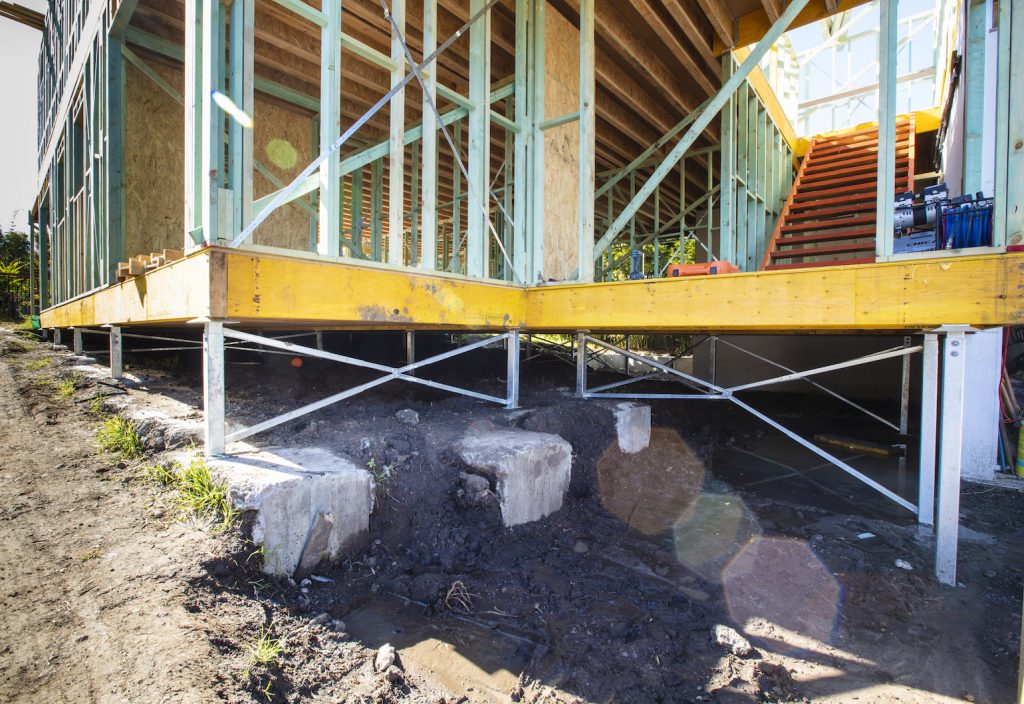They can have a significant impact on the durability of residential construction, especially in certain areas, warns the Galvanizers Association of Australia (GAA).
Following a recent article about corrosion rates being higher than expected at a coastal testing facility near Newcastle, NSW, the GAA has outlined additional considerations for residential construction.
Standards Australia have classified six types of zones of atmospheric corrosivity based on regional or macro-environments (C1 through to C5 and CX). The corrosion rate is determined by the location and various other factors, including proximity to sea, prevailing winds, temperature, humidity and exposure to pollutants or chemical attack. These influence the two key variables for atmospheric corrosion in Australia: time of wetness (TOW) of the surface and exposure to wind-borne salt aerosols.
Any building design that can locally alter TOW or concentration of surface contaminants will change the corrosion rate. These areas with modified corrosion rates are called micro-environments. There are three main types of micro-environments – sheltered, exposed and enclosed. In a coastal area, the first of these is the most damaging micro-environment.
“Sheltered environments near the coast are usually exposed to prevailing winds, so you’re still getting that salt deposition. However, unlike exposed environments where regular rain can wash away the salt, sheltered environments can experience a build-up of salt on the surface,” says David Harrison, Market and Specifications Engineer at GAA.
“Because these salts are hygroscopic, they can also absorb moisture from the atmosphere, so it’s worth noting that corrosion can begin even in the absence of any precipitation – corrosion can initiate if the relative humidity is above 80 per cent.”
If sheltered areas are unavoidable by design, then the GAA suggests assuming the corrosion rate for that area is at least one category higher than the macro-environment. It is also recommended to regularly wash sheltered areas in coastal areas to remove surface salt deposits and help to reduce corrosivity.
Code considerations
The preview National Construction Code (NCC) released in May this year outlines minimum galvanized coating thickness requirements for corrosivity zones in AS 4312 to ensure a coating life of at least 15 years in open exposure for any location. However, the coating masses in the NCC are theoretical and don’t represent commercially available coating classes. In practice, the thickness of a batch hot dip galvanized coating is determined by steel thickness.
In C5 zones, most hot dip galvanized coating will not be compliant, but some galvanized heavy structural steel might, and there are good duplex options available as well. For C4 zones, all hot dip galvanized coatings are compliant on steel greater than 3mm in thickness and will have a coating life of 15 years or more, and in all zones C3 and below all hot dip galvanized coatings are compliant.
For any steel thickness or steel chemistry, the applied coating thickness can be increased by one coating class if the surface is abrasive-blasted prior to being batch galvanized.
Recommended practices to minimise risk in residential construction
To minimise the risk of adverse micro-environments, the GAA recommends adopting these good design and construction practices.
- Avoid cutting or welding after galvanizing. Otherwise, ensure that all cut ends, holes or welds are repaired to an appropriate standard. Paint repairs to galvanized coatings are best applied by a brush rather than an aerosol spray.
- Be aware of any contact with soil, especially around piers and posts. This is largely a design issue, although it is sometimes also a maintenance issue.
- Be aware of capillary action. Water can enter narrow crevices through surface tension effects, including steel concrete interfaces. Once it gets inside, it becomes trapped and increases the local TOW.
These considerations are especially important when working with proprietary flooring systems using performance-based solutions, as these can have thinner coatings than the deemed-to-comply requirements of the Building Code of Australia.
Designers using these systems should also pay attention to the potential impact of manufacturing on the durability of cold-rolled structural sections.
“With cold rolling, such as where you form coated flat products into tubular hollow sections, the manufacturing process can cause micro-cracking of the coating on the corners,” says Harrison.
“We advise allowing for increased corrosion rates on the corners of tubes made from electroplated or continuous galvanized strips.”
Another potential issue with these products is the coating over the external weld seam which is applied by a thermal spray process. If done well, this coating provides corrosion protection equivalent to or greater than the parent coating. However, coastal tests by the GAA have shown that variations in the manufacturing process can lead to this area corroding more quickly than the adjacent coating.
With this updated advice, the GAA aims to give designers and the construction industry more clarity around the impact of micro-environments on durability in residential construction. Free technical presentations on this subject are also available.
For more information about these recommendations, please contact the team at the GAA to learn more.

